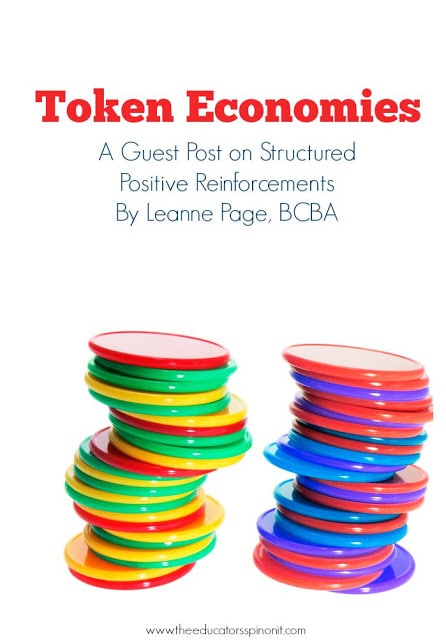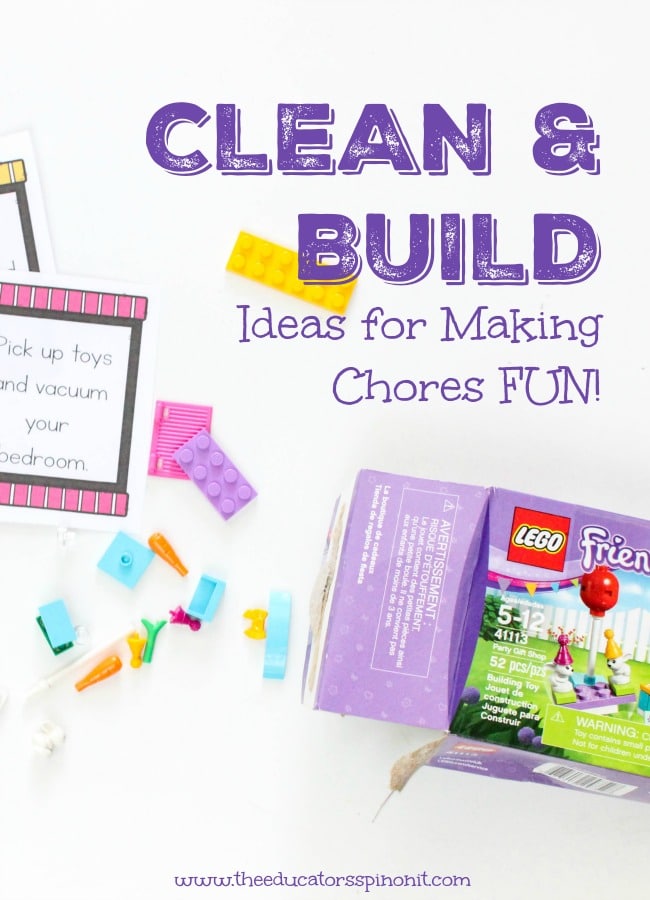Token Economies
As moms, we want our kids to want to have good behavior.
They should want to behave because it’s the right thing to do, right? Yeah right. Have you met a 3 year old with an innate desire to good for this world? It’s in there somewhere but at age 3, it’s more like threenager-ville. Little humans do what gets them what they want. The behavior in a certain way to achieve a certain outcome.
A threenager is likely to tantrum to get access to their favorite toy, TV show, candy, a left shoe they can see on the other side of the room- you name it. They are acting a certain way (tantrum) to achieve a certain outcome (getting whatever random thing they want).
What can we do about this? Is there any way to teach them to behave?! Well- we can make sure they get what they want not by having a tantrum, but by engaging in desired behaviors.
Structured Positive Reinforcements
We can use positive reinforcement in a more structured and specific way than just handing out praise and rewards willy-nilly.
The definition of a token economy is: a behavior change system consisting of three major components:
- (a) a specified list of target behaviors;
- (b) tokens or points that participants receive for emitting the target behaviors; and
- (c) a menu of backup reinforcer items.
Token economies can possibly take the form of sticker charts, chore charts, marble jars, etc. You need a physical token that your child can earn when they engage in the desired behavior.
You do NOT need to go out and spend $50 at the nearest school supply store making a big fancy chart. You can draw 5 circles on a piece of paper. When they do the desired behavior, draw a check mark in the circle. Done.
Grab that piece of junk mail off the kitchen counter and a half-eaten, I mean half-broken, crayon.
The next step is to define the behaviors.
Again- you don’t need a big fancy dictionary. Just pick one to three behaviors that will earn the tokens. You need your Little to understand this so it can’t be a big grown up idea like being responsible or showing respect.
What does that mean to a Little? Be specific.
You earn a token for:
- (1) following instructions without yelling;
- (2) eating 5 bites of every food Mom puts in front of you; and
- (3) putting on your shoes when instructed to.
Pick your battles. You may have a list of 20+ things your Little could stand to improve.
I’m pretty sure I have a list of 20+ things to put myself on a token economy.
Let’s prioritize and make it understandable by the kiddo.
Lastly- what can they earn with these tokens?
You can give choices before earning and they can decide at the beginning or at the end. You can make a fancy menu of reinforcers- Chuck E Cheese is the perfect example of this. This many tickets = this super awesome toy. Or you can just say: get all the stickers, get 5 check marks, get 10 marbles and earn a fun activity. You can pick from: extra screen time, trip to the library, a new toy from the dollar spot, etc.
Parent and Teacher Take-Aways
- Pick 1-3 behaviors and make sure your Little understands what they are.
- Have an actual token they can earn and set a goal.
- Provide the reward when they reach that goal. Make it a big deal!
Tips for Using the Token Economies Strategy
- When you first start out, set the goal low. If it’s too hard to achieve, that won’t motivate anyone, especially a Little who is struggling with those behaviors to begin with.
- Over time, raise the goal. Make the reward bigger for a bigger goal, smaller for a smaller goal. Play with it to see what is successful for your Little and doable for you in your busy day.
- Make every token earned a big deal- lots of praise and excitement.
- Don’t spend a lot of time and money setting up a fancy system. Like all things we do as parents- as soon as we get a good system down, our Little changes things up on us and we have to be flexible.
- Be creative!
My aunt gave this idea from her life: She had a picture of a poodle and her daughter glued cotton balls on it. When she filled the picture, they actually got the poodle!
My sister let her oldest pick out his marbles for a marble jar on a special shopping trip to the craft store (less than $5- donu2019t go crazy folks!). That helped him buy into the process from the get-go. Cut up a picture of the prize like a puzzle. They get a puzzle piece as a token. The finished puzzle earns the prize! Look in the app store. Seriously- there are apps for reward charts. Google behavior chart.
You’ll find a gazillion cute templates if that’s what you’re into- cutesy. I once made a necklace for a student who was really into jewelry. It was a laminated sticker chart necklace and she LOVED it.
One last thought: Someday you will find that things are going well and the token economy goes by the wayside.
Remember it when a new problem behavior crops up and you are once again at your wit’s end. Start over. Pick new behaviors, new rewards, same system.
Research is cool!
- Cooper, J., Heron, T., & Heward, W. (2007). Basic Concepts. In Applied Behavior Analysis(2nd ed., pp 560-567). Columbus: Pearson.
- Kazdin, A. E. (Ed.). (1977). The token economy: A review and evaluation. Plenum Publishing Corporation.
- Kazdin, A. E. (1982). The token economy: A decade later. Journal of Applied Behavior Analysis, 15(3), 431-445.
- Skinner, B. F., Ferster, C. B., & Ferster, C. B. (1997). Schedules of reinforcement. Massachusetts: Copley Publishing Group.
- Reitman, D., Murphy, M. A., Hupp, S. D., & O’Callaghan, P. M. (2004). Behavior change and perceptions of change: Evaluating the effectiveness of a token economy. Child & Family Behavior Therapy, 26(2), 17-36
Leanne Page, Board Certified Behavior Analyst and Stay at Home Mom. Years of graduate school in behavior analysis have come in handy as a mom and now I want to share those things with you! You may also enjoy her parenting articles at BCBA.
My daughter had to wear an eye patch during her waking hours for much of her 2nd and 3rd years of life. This was hard… REALLY HARD. Essentially we were taking away her vision in hopes of saving it for the rest of her life. She could not see with the patch on. It was not comfortable. People would say mean things about it to her.
We used this structured positive reinforcement system, or token economies strategy to help us accomplish a medically necessary task. She would earn stickers for each hour of patching she did and trade those stickers in for a small toy. It worked for us, so I am so thankful to Leanne Page for sharing her expertise with us, and could especially relate to some of her tips for setting realistic goals, staying simple, and being creative.
Follow along with our Parenting with Purpose series for even more parenting inspiration and tips from parents around the world! ~ Amanda









